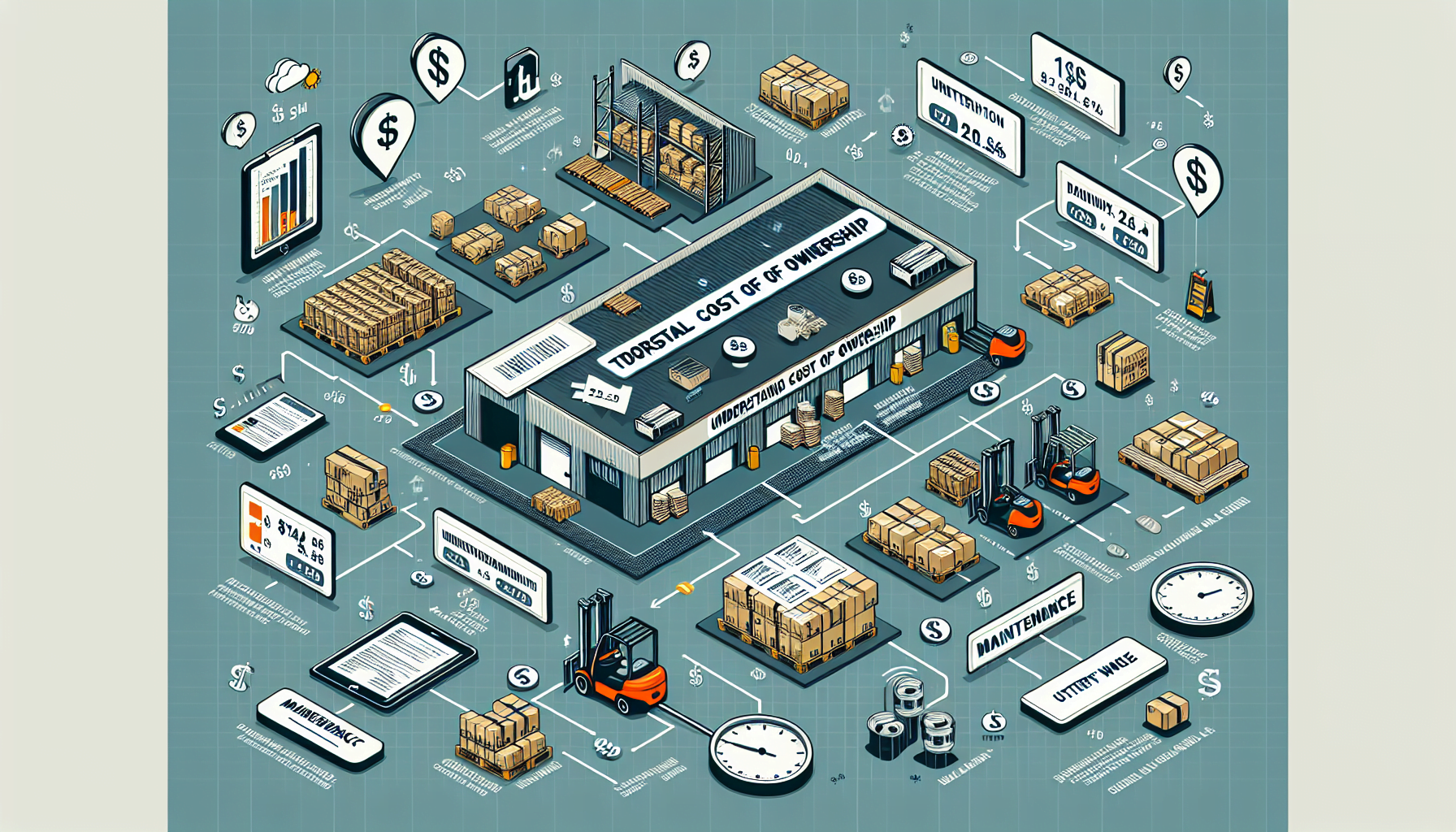The total cost of ownership (TCO) is a crucial factor to consider when it comes to warehouse operations. By understanding the TCO, businesses can make informed decisions that enhance safety, productivity, efficiency, and cost-effectiveness within their warehouses. In this article, we will delve deeper into the concept of TCO and its significance in the realm of warehousing.
What is Total Cost of Ownership?
The Total Cost of Ownership (TCO) is a financial metric that helps businesses assess the complete cost of owning and operating a particular asset over its entire lifecycle. In the context of warehousing, TCO takes into account all the costs associated with owning, maintaining, and running a warehouse, including both direct and indirect expenses.
Direct costs include expenses such as rent, utilities, equipment, and labor. Indirect costs, on the other hand, encompass various hidden costs that may not be as apparent, including inventory carrying costs, maintenance and repair costs, and even potential costs related to safety incidents and inefficient workflows.
It is essential for businesses to understand that the TCO goes beyond the initial investment. By considering all the costs associated with warehouse operations, companies can make more informed decisions about optimizing their processes and effectively managing their resources.
Importance of Understanding TCO in Warehousing
When businesses have a clear understanding of the TCO in their warehouses, they can identify areas of inefficiency and implement strategies to reduce costs. Here are some reasons why understanding TCO is important in warehousing:
- Cost Reduction: By systematically analyzing the TCO, businesses can pinpoint areas where unnecessary expenses are incurred. This allows them to develop cost reduction strategies and optimize their operations for improved profitability.
- Informed Decision-Making: Understanding TCO provides businesses with valuable insights when making decisions related to warehouse operations. It enables them to evaluate various options, such as leasing versus owning equipment or outsourcing certain tasks, based on a holistic understanding of the costs involved.
- Resource Allocation: By evaluating the TCO, businesses can allocate their resources effectively. They can identify investments that yield the highest returns and make better-informed decisions when it comes to budgeting and prioritizing projects.
- Long-Term Planning: TCO analysis helps businesses create long-term plans for their warehouses. By considering the full lifecycle costs, they can anticipate future expenses and plan accordingly, ensuring their operations remain sustainable and cost-effective.
Factors to Consider in TCO Analysis
When conducting a TCO analysis for a warehouse, it’s essential to take into account various factors that contribute to the overall cost. Here are some key factors to consider:
- Real Estate Costs: This includes rent, property taxes, and insurance. Analyzing these costs helps businesses evaluate whether owning or leasing a warehouse is more cost-effective.
- Operational Costs: These include utilities, maintenance and repairs, security, and equipment costs. Understanding these expenses allows businesses to identify areas for potential cost savings.
- Labor Costs: Analyzing labor costs involves considering wages, benefits, training, and employee turnover rates. Optimizing labor allocation and investing in employee development can lead to significant cost reduction.
- Inventory Costs: Inventory carrying costs, such as storage, handling, and insurance, contribute to the overall TCO. Minimizing carrying costs by implementing efficient inventory management practices can have a substantial impact on the bottom line.
- Technology Costs: Investments in technology solutions, such as warehouse management systems and automation, can contribute to the TCO. However, these investments can also lead to long-term cost savings and improved efficiency.
By considering these factors and conducting a comprehensive TCO analysis, businesses can gain a holistic understanding of the costs associated with their warehouse operations and identify areas for improvement.
At HCO Innovations, we specialize in helping businesses optimize their warehouse operations and reduce their TCO. Our Warehouse Cost Analysis service provides a detailed evaluation of all cost components, helping businesses identify opportunities for improvement and cost reduction. With our expertise, businesses can enhance their warehouse safety, productivity, and efficiency while maximizing their cost-effectiveness.
To learn more about our Warehouse Cost Analysis service and how it can benefit your business, click here.

